Image Sensors and Imaging Systems 2017 Conference Program
Wednesday February 1, 2017
KEYNOTE: Bayer Pattern and Image Quality
Session Chairs: Kevin Matherson, Microsoft Corporation (United States), and Dietmar Wueller, Image Engineering GmbH & Co. KG (Germany)
8:50 – 9:30 AM
Grand Peninsula Ballroom A
This session is jointly sponsored by: Image Sensors and Imaging Systems 2017 and Digital Photography and Mobile Imaging XIII.
Conference Chair Opening Remarks
IMSE-077
Bayer pattern and image quality, Jörg Kunze, Basler AG (Germany)
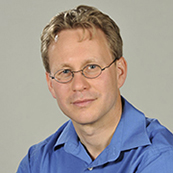 Jörg Kunze has received his PhD in physics from the University of Hamburg (2004). He joined Basler in 1998, where he started as an electronics developer and where he currently is the team leader of New Technology. Kunze serves as an expert for image sensors, camera hardware, noise, color fidelity, 3D- and computational imaging and develops new algorithms for color image signal processing. The majority of the Basler patents name him as inventor. Jörg Kunze has received his PhD in physics from the University of Hamburg (2004). He joined Basler in 1998, where he started as an electronics developer and where he currently is the team leader of New Technology. Kunze serves as an expert for image sensors, camera hardware, noise, color fidelity, 3D- and computational imaging and develops new algorithms for color image signal processing. The majority of the Basler patents name him as inventor. |
Input Signal Quality & Characterization
Session Chairs:
Kevin Matherson, Microsoft Corporation (United States), and Dietmar Wueller, Image Engineering GmbH & Co. KG (Germany)
9:30 – 10:10 AM
Grand Peninsula Ballroom A
This session is jointly sponsored by: Image Sensors and Imaging Systems 2017 and Digital Photography and Mobile Imaging XIII.
9:30IMSE-078
Accurate joint geometric camera calibration of visible and far-infrared cameras, Takashi Shibata1,2, Masayuki Tanaka1, and Masatoshi Okutomi1; 1Tokyo Institute of Technology and 2NEC Corporation (Japan)
9:50DPMI-079
Interferometric measurement of sensor MTF and crosstalk, Todor Georgiev, Jennifer Gille, Amber Sun, Lyubomir Baev, and Tharun Battula, Qualcomm Technologies, Inc. (United States)
10:00 AM – 4:00 PM Industry Exhibition
10:10 – 10:50 AM Coffee Break
KEYNOTE: Silicon Retina Technology
Session Chairs: Thomas Vogelsang, Rambus Inc., and Ralf Widenhorn, Portland State University (United States)
10:50 – 11:30 AM
Grand Peninsula Ballroom A
This session is jointly sponsored by: Image Sensors and Imaging Systems 2017 and Digital Photography and Mobile Imaging XIII.
DPMI-080
Silicon retina technology (Invited), Tobi Delbruck, Institute for Neuroinformatics (INI) (Switzerland)
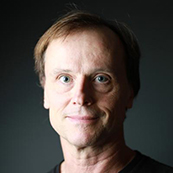 Tobi Delbruck (IEEE M'99-SM'06-F'13) received a PhD from Caltech (1993). He is currently a professor of physics and electrical engineering at ETH Zurich in the Institute of Neuroinformatics, University of Zurich and ETH Zurich, Switzerland, where he has been since 1998. His group, which he coordinates together with Shih-Chii Liu, focuses on neuromorphic event-based sensors and sensory processing. He has co-organized the Telluride Neuromorphic Cognition Engineering summer workshop and the live demonstration sessions at ISCAS and NIPS. Delbruck is past Chair of the IEEE CAS Sensory Systems Technical Committee. He worked on electronic imaging at Arithmos, Synaptics, National Semiconductor, and Foveon and has founded 3 spin-off companies, including inilabs.com, a non-for-profit organization that has distributed hundreds of R&D prototype neuromorphic sensors to more than a hundred organizations around the world. He has been awarded 9 IEEE awards. Tobi Delbruck (IEEE M'99-SM'06-F'13) received a PhD from Caltech (1993). He is currently a professor of physics and electrical engineering at ETH Zurich in the Institute of Neuroinformatics, University of Zurich and ETH Zurich, Switzerland, where he has been since 1998. His group, which he coordinates together with Shih-Chii Liu, focuses on neuromorphic event-based sensors and sensory processing. He has co-organized the Telluride Neuromorphic Cognition Engineering summer workshop and the live demonstration sessions at ISCAS and NIPS. Delbruck is past Chair of the IEEE CAS Sensory Systems Technical Committee. He worked on electronic imaging at Arithmos, Synaptics, National Semiconductor, and Foveon and has founded 3 spin-off companies, including inilabs.com, a non-for-profit organization that has distributed hundreds of R&D prototype neuromorphic sensors to more than a hundred organizations around the world. He has been awarded 9 IEEE awards. |
Emerging Imaging Sensor & Hardware
Session Chairs:
Thomas Vogelsang, Rambus Inc., and Ralf Widenhorn, Portland State University (United States)
11:30 – 11:50 AM
Grand Peninsula Ballroom A
This session is jointly sponsored by: Image Sensors and Imaging Systems 2017 and Digital Photography and Mobile Imaging XIII.
11:30DPMI-081
TIK: A time domain continuous imaging testbed using conventional still images and video, Henry Dietz, John Fike, Paul Eberhart, Katie Long, Clark Demaree, and Jong Wu, University of Kentucky (United States)
KEYNOTE: CMOS image sensor pixel design and optimization
Session Chairs: Thomas Vogelsang, Rambus Inc., and Ralf Widenhorn, Portland State University (United States)
11:50 AM – 12:40 PM
Grand Peninsula Ballroom A
This session is jointly sponsored by: Image Sensors and Imaging Systems 2017 and Digital Photography and Mobile Imaging XIII.
IMSE-082
CMOS image sensor pixel design and optimization, Boyd Fowler, OmniVision Technologies (United States)
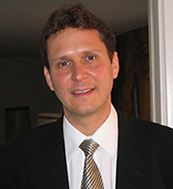 Boyd Fowler's research interests include CMOS image sensors, low noise image sensors, noise analysis, data compression, and machine learning and vision. He received his MSEE (1990) and PhD (1995) from Stanford University. After finishing his PhD he stayed at Stanford University as a research associate in the Electrical Engineering Information Systems Laboratory until 1998. In 1998, Fowler founded Pixel Devices International in Sunnyvale California. Between 2005 and 2013, Fowler was CTO and VP of Technology at Fairchild Imaging. He is currently at OmniVision Technologies leading the marketing department. Fowler has authored numerous technical papers, book chapters and patents. Boyd Fowler's research interests include CMOS image sensors, low noise image sensors, noise analysis, data compression, and machine learning and vision. He received his MSEE (1990) and PhD (1995) from Stanford University. After finishing his PhD he stayed at Stanford University as a research associate in the Electrical Engineering Information Systems Laboratory until 1998. In 1998, Fowler founded Pixel Devices International in Sunnyvale California. Between 2005 and 2013, Fowler was CTO and VP of Technology at Fairchild Imaging. He is currently at OmniVision Technologies leading the marketing department. Fowler has authored numerous technical papers, book chapters and patents. |
Image Sensors and Imaging Systems 2017 Awards
12:40 – 2:00 PM Lunch Break
EI 2017 Wednesday Plenary and Symposium Awards
Session Chairs: Joyce E. Farrell, Stanford University, and Nitin Sampat, Rochester Institute of Technology (United States)
2:00 – 3:00 PM
Grand Peninsula Ballroom D
Designing VR video camera systems, Brian Cabral, Facebook, Inc. (United States)
Brian Cabral is Director of Engineering at Facebook, leading the Surround 360 VR camera team, specializing in computational photography, computer vision, and computer graphics. He has published a number of papers in the area of computer graphics and imaging including the pioneering Line Integral Convolution algorithm. Cabral discusses developing Facebook Surround 360, an open, high-quality 3D-360 video capture system. VR video capture systems are composed of multiple optical and digital components - all of which must operate as if they are one seamless optical system. The design of VR video cameras, optical choices, SNR, etc., require a new set of technologies and engineering approaches, with tight coupling to the computational system components.
3:00 – 3:30 PM Coffee Break
High Performance Imaging
Session Chairs:
Rihito Kuroda, Tohoku University (Japan), and Alice Reinheimer, e2v (United States)
3:30 – 5:00 PM
Grand Peninsula Ballroom A
3:30IMSE-178
High sensitivity and high readout speed electron beam detector using steep pn Junction Si diode for low acceleration voltage, Yasumasa Koda, Rihito Kuroda, Masaya Hara, Hiroyuki Tsunoda, and Shigetoshi Sugawa, Tohoku University (Japan)
3:50IMSE-179
A full-resolution 8K single-chip portable camera system, Tomohiro Nakamura, Takahiro Yamasaki, Ryohei Funatsu, and Hiroshi Shimamoto, NHK Science and Technology Research Laboratories (Japan)
4:10IMSE-180
Filter selection for multispectral imaging optimizing spectral, colorimetric and image quality, Yixuan Wang, Rochester Institute of Technology (United States)
4:30IMSE-181
The challenge of shot-noise limited speckle patterns statistical analysis, Jean-Michel Tualle, Kinia Barjean, Eric Tinet, and Dominique Ettori, University Paris 13 (France)
4:50IMSE-182
Overview of machine vision standards, Arnaud Darmont, APHESA SPRL (Belgium)
Image Sensors and Imaging Systems 2017 Interactive Papers Oral Previews
Session Chairs:
Arnaud Darmont, APHESA SPRL (Belgium), and Ralf Widenhorn, Portland State University (United States)
5:00 – 5:30 PM
Grand Peninsula Ballroom A
In this session interactive poster authors will each provide a brief oral preview of their poster presentation, which will be presented fully in the Image Sensors and Imaging Systems 2017 portion of the Symposium Interactive Papers Session at 5:30 pm on Wednesday.
5:00
Session Chair Remarks
5:10IMSE-183
Hot pixel rate behavior as pixel sizes go to 1 micron, Glenn Chapman1, Rahul Thomas1, Israel Koren2, and Zahava Koren2; 1Simon Fraser University (Canada) and 2University of Massachusetts Amherst (United States)
5:20IMSE-184
Performance evaluation of the thick pinhole gamma rays diagnostic system, Hongwei Xie, Institute of Nuclear Physics and Chemistry (China)
5:30 – 7:00 PM Symposium Interactive Papers (Poster) Session, Atrium
5:30 – 7:00 PM Meet the Future: A Showcase of Student and Young Professionals Research, Atrium
Thursday February 2, 2017
Sensor Design and Technology
Session Chairs:
Arnaud Peizerat, CEA, and Jean-Michel Tualle, University Paris 13 (France)
8:50 – 9:50 AM
Harbour A,B
8:50IMSE-185
Octagonal CMOS image sensor for endoscopic applications, Elena Reis, Alice Andrade, Martin Wäny, Pedro Santos, Ricardo M. Sousa, and Natércia Sousa, Awaiba, Lda (Portugal)
9:10IMSE-186
Optimization of CMOS image sensor utilizing variable temporal multi-sampling partial transfer technique to achieve full-frame high dynamic range with superior low light and stop motion capability, Salman Kabir, Craig Smith, Gerrit Barnard, Alex Schneider, Frank Armstrong, Michael Guidash, Thomas Vogelsang, and Jay Endsley, Rambus Inc. (United States)
9:30IMSE-187
A lateral electric field charge modulator with bipolar-gates for time-resolved imaging, Yuki Morikawa, Keita Yasutomi, Shoma Imanishi, Taishi Takasawa, Keiichiro Kagawa, Nobukazu Teranishi, and Shoji Kawahito, Shizuoka University (Japan)
KEYNOTE: Sensor design and technology
Session Chairs: Arnaud Peizerat, CEA, and Jean-Michel Tualle, University Paris 13 (France)
9:50 – 10:20 AM
Harbour A,B
IMSE-188
A 128x128, 34µm pitch, 8.9mW, 190mK NETD, TECless Uncooled IR bolometer image sensor with columnwise processing, Laurent Alacoque1, Sébastien Martin1, Wilfried Rabaud1, Édith Beigné1, and Antoine Dupret2; 1Minatec Campus and 2CEA (France)
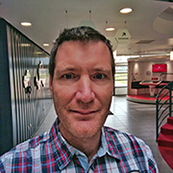 Laurent Alacoque was born in Lyon, France in 1974, He received the engineering degree in electronics and information processing from the Ecole Superieure de Chimie Physique et Electronique of Lyon (ESCPE) (1998). In the same year, he joined the Institut National de Sciences Appliquees (INSA) on Villeurbanne Campus for a PhD on the application of Asynchronous Logic to Analogue-Digital Conversion. He received his PhD (2002), and joined the CEA-Leti in 2003, first as a postdoctoral student and then as a member of the smart-imaging laboratory. Since then, his work focuses on the imaging chain, from pixel level design, imager-specific Analogue-Digital Conversion, to Image Signal Processing algorithms. Laurent Alacoque was born in Lyon, France in 1974, He received the engineering degree in electronics and information processing from the Ecole Superieure de Chimie Physique et Electronique of Lyon (ESCPE) (1998). In the same year, he joined the Institut National de Sciences Appliquees (INSA) on Villeurbanne Campus for a PhD on the application of Asynchronous Logic to Analogue-Digital Conversion. He received his PhD (2002), and joined the CEA-Leti in 2003, first as a postdoctoral student and then as a member of the smart-imaging laboratory. Since then, his work focuses on the imaging chain, from pixel level design, imager-specific Analogue-Digital Conversion, to Image Signal Processing algorithms. |
10:20 – 10:50 AM Coffee Break
Noise and Performance
Session Chairs:
Boyd Fowler, OmniVision Technologies (United States), and Gilles Sicard, CEA (France)
10:50 – 11:50 AM
Harbour A,B
10:50IMSE-189
Residual bulk image characterization using photon transfer techniques, Richard Crisp, Etron Technology America (United States)
11:10IMSE-190
RTS and photon shot noise reduction based on maximum likelihood estimate with multi-aperture optics and semi-photon-counting-level CMOS image sensors, Haruki Ishida1, Keiichiro Kagawa1, Min Seo1, Takashi Komuro2, Bo Zhang1, Taishi Takasawa1, Keita Yasutomi1, and Shoji Kawahito1; 1Shizuoka University and 2Saitama University (Japan)
11:30IMSE-191
Linearity analysis of a CMOS image sensor, Fei Wang1 and Albert Theuwissen1,2; 1Technische University Delft (the Netherlands) and 2Harvest Imaging (Belgium)
KEYNOTE: Automotive Imaging
Session Chairs: Arnaud Darmont, APHESA SPRL (Belgium), Ralf Widenhorn, Portland State University (United States), and Buyue Zhang, Intel (United States)
11:50 AM – 12:30 PM
Harbour A,B
This session is jointly sponsored by: Image Sensors and Imaging Systems 2017 and Autonomous Vehicles and Machines 2017.
IMSE-196
Automotive imaging, Patrick Denny, Valeo (Ireland)
|
Patrick Denny is a Senior Research Engineer and a Valeo Senior Expert and has worked for the last 15 years at Valeo Vision Systems, Ireland. He received his PhD in physics (2000) from the National University of Ireland, Galway, where he is also Adjunct Professor of Automotive Electronics. Denny has in excess of 20 years experience in scientific and technological development internationally, designing, innovating and developing automotive imaging technologies for BMW, Jaguar Land Rover, Daimler, VW and other OEMs. His research interests include several aspects of automotive vision system image quality, sensor components, algorithmic design, systems, machine learning and data analytics. |
12:30 – 2:00 PM Lunch Break
Image and Sensor Applications
Session Chairs:
Glenn Chapman, Simon Fraser University (Canada), and Xinyang Wang, Gpixel Inc. (China)
2:00 – 2:40 PM
Harbour A,B
2:00IMSE-192
FPGA platform for testing a real-time tone-mapping algorithm based on a Mantissa-exponent representation, Ulian Shahnovich and Orly Yadid-Pecht, University of Calgary (Canada)
2:20IMSE-194
Fast, low-complex, non-contact motion encoder based on the NSIP concept, Anders Astrom1 and Robert Forchheimer2; 1Combitech AB and 2Linkoping University (Sweden)
KEYNOTE: Image Sensors for Devices of Internet of Things
Session Chairs: Arnaud Darmont, APHESA SPRL (Belgium), and Ralf Widenhorn, Portland State University (United States)
2:40 – 3:20 PM
Harbour A,B
IMSE-195
In the quest of vision-sensors-on-chip: Pre-processing sensors for data reduction, Angel Rodríguez-Vázquez, Universidad de Sevilla (Spain)
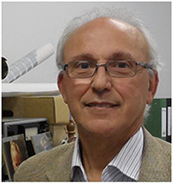 Ángel Rodriguez-Vazquez (IEEE Fellow, 1999) conducts research on the design of analog and mixed-signal front-ends for sensing and communication, including smart imagers, vision chips and low-power sensory-processing microsystems. He received his Bachelor’s (University of Seville, 1976) and PhD in physics-electronics (University of Seville, 1982) with several national and international awards, including the IEEE Rogelio Segovia Torres Award (1981). After research stays at UC Berkeley and Texas A&M University, he became a Full Professor of Electronics at the University of Sevilla in 1995. He co-founded the Institute of Microelectronics of Sevilla, under the umbrella of the Spanish Council Research (CSIC) and the University of Sevilla and started a research group on Analog and Mixed-Signal Circuits for Sensors and Communications. In 2001 he was the main promotor and co-founder of the start-up company AnaFocus Ltd. and served as CEO, on leave from the University, until June 2009, when the company reached maturity as a worldwide provider of smart CMOS imagers and vision systems-on-chip. He has authored 11 books, 36 additional book chapters, and some 150 journal articles in peer-review specialized publications. He was elected Fellow of the IEEE for his contributions to the design of chaos-based communication chips and neuro-fuzzy chips. His research work has received some 6,954 citations; he has an h-index of 42 and an i10-index of 143. Ángel Rodriguez-Vazquez (IEEE Fellow, 1999) conducts research on the design of analog and mixed-signal front-ends for sensing and communication, including smart imagers, vision chips and low-power sensory-processing microsystems. He received his Bachelor’s (University of Seville, 1976) and PhD in physics-electronics (University of Seville, 1982) with several national and international awards, including the IEEE Rogelio Segovia Torres Award (1981). After research stays at UC Berkeley and Texas A&M University, he became a Full Professor of Electronics at the University of Sevilla in 1995. He co-founded the Institute of Microelectronics of Sevilla, under the umbrella of the Spanish Council Research (CSIC) and the University of Sevilla and started a research group on Analog and Mixed-Signal Circuits for Sensors and Communications. In 2001 he was the main promotor and co-founder of the start-up company AnaFocus Ltd. and served as CEO, on leave from the University, until June 2009, when the company reached maturity as a worldwide provider of smart CMOS imagers and vision systems-on-chip. He has authored 11 books, 36 additional book chapters, and some 150 journal articles in peer-review specialized publications. He was elected Fellow of the IEEE for his contributions to the design of chaos-based communication chips and neuro-fuzzy chips. His research work has received some 6,954 citations; he has an h-index of 42 and an i10-index of 143. |
3:20 – 4:00 PM Coffee Break